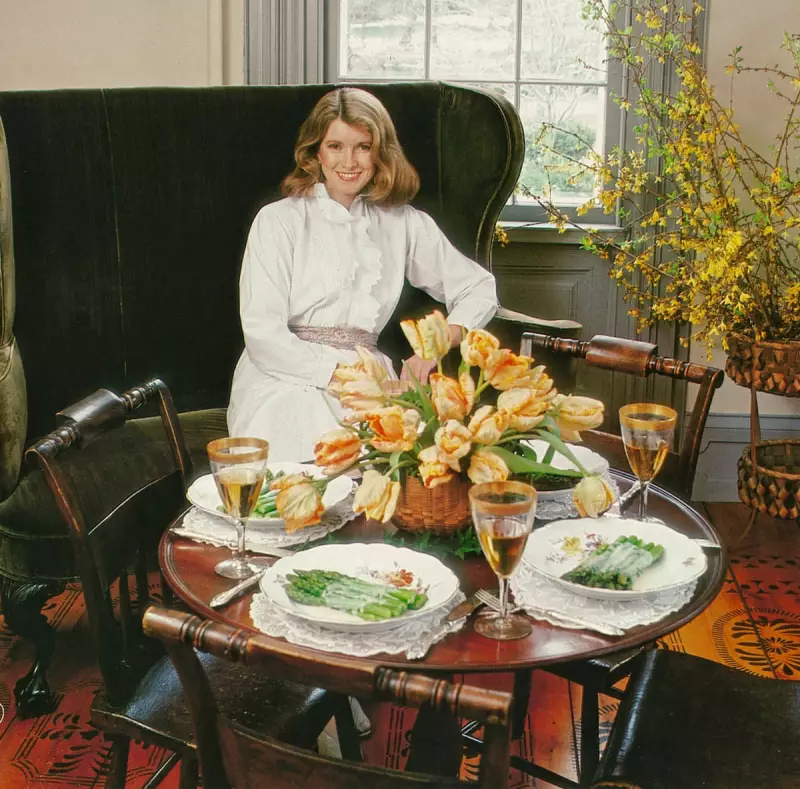
Martha Stewart's Fantastical Menus: A 1980s Inspiration Reborn
In an unseasonably warm November, a Connecticut greenhouse was transformed into a Hawaiian luau. Giant clam shells served as platters, miniature hibachis grilled Dungeness crab, and a 19lb suckling pig, adorned with a starfruit necklace and tropical flowers, took centre stage. This was the work of Martha Stewart, then a caterer, long before she built her media empire. She documented this extraordinary event in her 1982 debut cookbook, Entertaining, a work that has just been rereleased after 43 years.
The Absurd Genius of Entertaining
Stewart’s book is far more than a collection of recipes; it is a masterclass in creative, often whimsical, hosting. Her advice was both dazzling and, to some, dangerously impractical. She suggested setting up small tables in the bedroom with linen to match the bedsheets, or using a single, large Bermuda onion as a centrepiece. For a Russian-themed dinner, she recommended hiring a balalaika player and borrowing a silver samovar.
The menus featured in the book are legendary for their complexity and flair, including goblets of borscht and turkey-shaped madeleines. One of the most spectacular lines instructs the reader to “cook remaining 100 lobsters,” a testament to the scale of her culinary vision. While her ideas may seem out of touch with modern, casual entertaining, they remind us that hosting should be an adventure.
Why Stewart's Philosophy Still Matters Today
For decades, the way we entertain has swung like a pendulum. The elaborate dinner parties of the 1980s gave way to the backlash of casual cocktail parties. Today, the trend is for breezy, Alison Roman-inspired gatherings. But in our desire to avoid ostentation, have we lost something vital? Stewart’s work argues that fun is not the same as casualness.
True fun in entertaining comes from creating an experience that is different from the everyday. Stewart’s advocacy for tempura parties, omelette brunches for 60, and dinners featuring half a dozen soups encourages hosts to be imaginative. It pushes back against the idea of replicating a restaurant at home, instead championing the creation of unique, fantastical feasts that no commercial establishment would dare attempt.
The rerelease of Entertaining offers a new generation of culinary enthusiasts the chance to rediscover this philosophy. It serves as a vibrant reminder that the ultimate goal of hosting is not perfection or ease, but joy and creativity. Martha Stewart’s generational talent for what some might call nonsense is, in fact, a powerful inspiration to make entertaining fun again.





